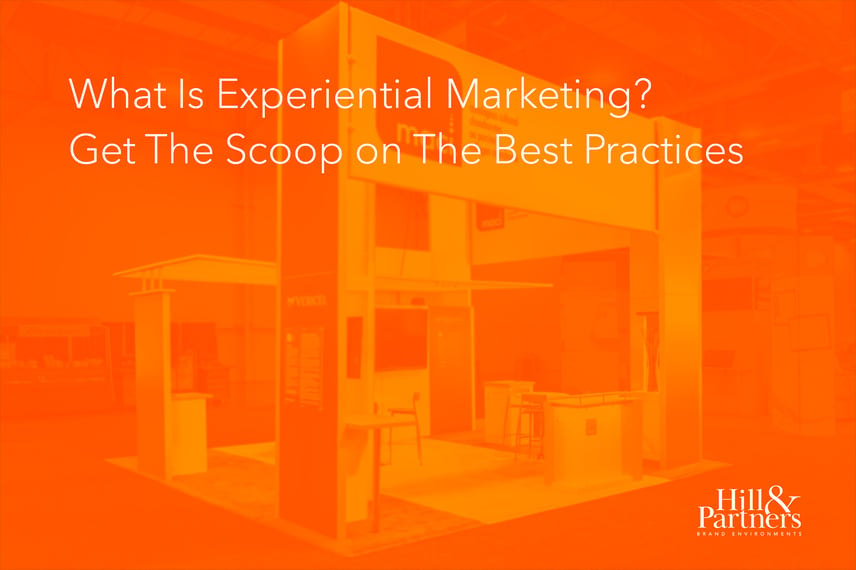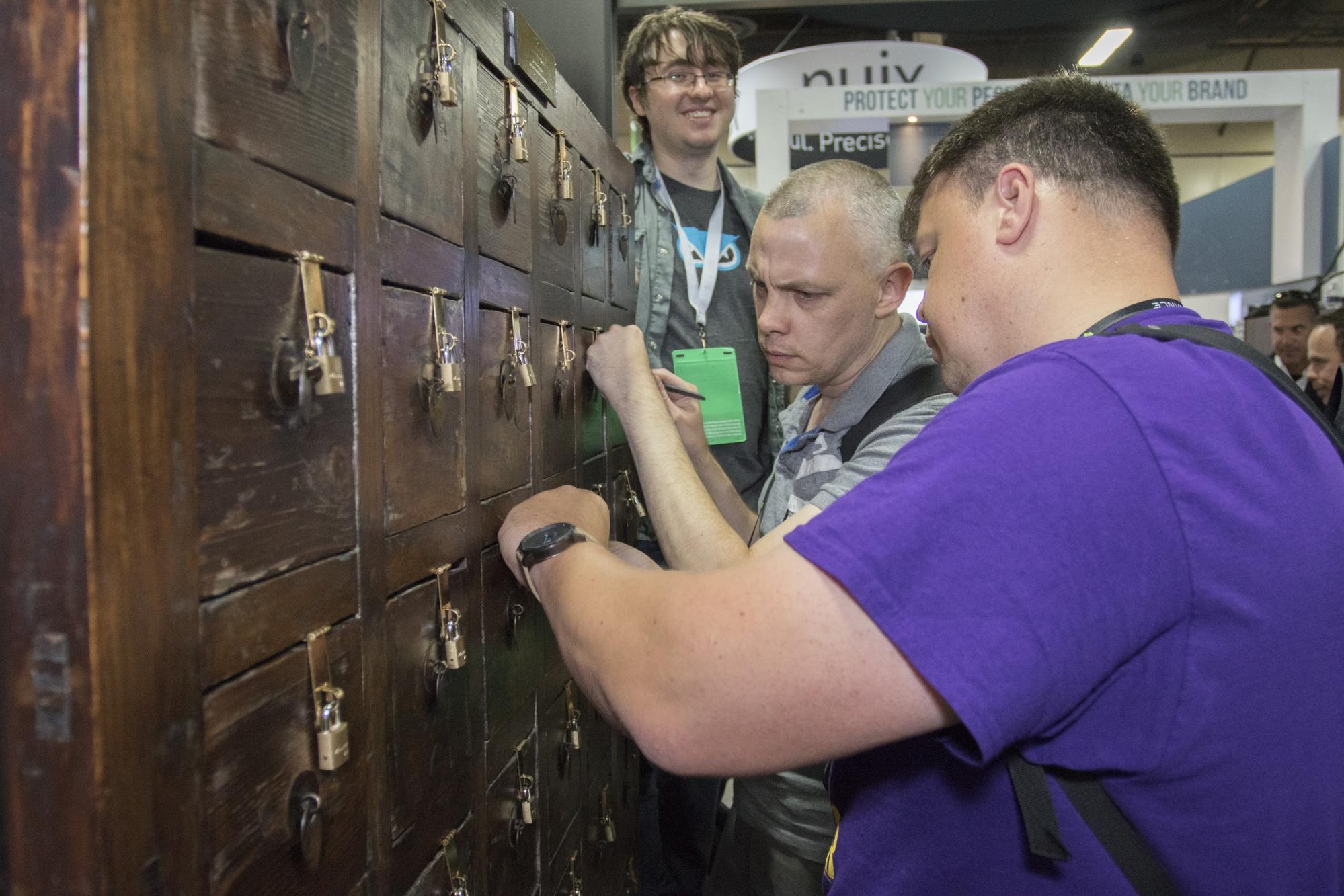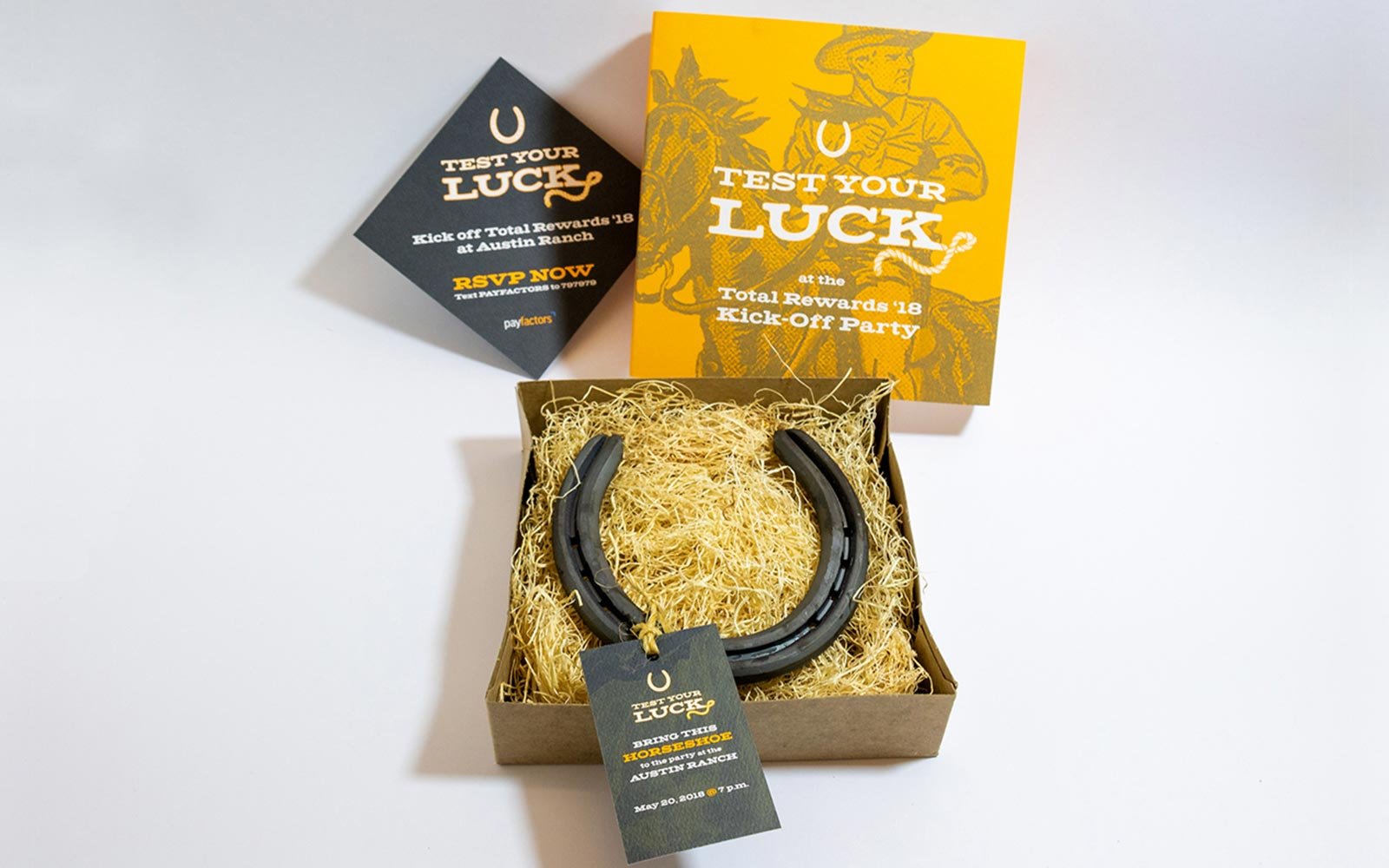What Is Experiential Marketing? Get The Scoop On Best Practices

What does experiential marketing mean? It’s a term that’s thrown around a lot, and has a meaning that varies depending on whom you ask. For example, some people define the term more loosely, and would say that simply sending customers to a website could be considered experiential marketing. But we opt for a tighter experiential marketing definition, explained in detail below.
Experiential Marketing FAQs
What is experiential marketing?
The concept of experiential marketing is about creating an authentic brand experience—one that helps prospects or customers understand your brand and the specific message you want to convey.
This is accomplished through an experiential event instead of a more traditional sales presentation, demo, or other less-interactive method. The event is meant to evoke a desired emotion from customers, giving them a way to “feel” the brand versus simply receiving information. Experiential events are typically held in person and engage multiple senses (sight, touch, etc.). For these events to be effective, they should not be just about selling.
Why is experiential marketing important?
The goal of experiential marketing is to leave a more memorable impression than a traditional digital ad or sales call could accomplish. (Tweet this!) This helps build a lasting connection between a prospect or customer and your brand, lowering the barrier to selling as they move down the sales funnel. For prospects, this means making a sale. For current customers, this means retaining them or increasing the number of products or services they engage with.
What are some experiential marketing examples?
One example of experiential marketing is Cybereason’s trade show exhibit at Black Hat, an information security event series that draws thousands of industry professionals every year.
To stand out among a sea of similar booths, the cybersecurity company worked with Hill & Partners to create a nontraditional Branded Environment with a speakeasy theme—a stark contrast to the endless high-tech lookalikes on the show floor.

The Branded Environment also featured a series of complex puzzles and games, an activity that spoke to the inner problem solver inside the engineer-types that attended the event. There were several lock-picking puzzles, complete with branded lock-picking kits, which challenged attendees to open antique apothecaries and safes. Attendees were enthralled with the experience, especially when they were successful in picking a lock to claim the prize inside. They left with a memorable experience and positive impression of the Cybereason brand.

Another example is Payfactors’ extended experience for the Total Rewards Conference & Exhibition, an event for information- and technology-sharing across various areas of HR.
The HR software development company actually started the experience long before the show—they sent attendees a horseshoe in a mailer with instructions to bring the horseshoe with them to a Payfactors-hosted party. The show was being held in Austin, Texas, which inspired Payfactors to make the party western-themed. Attendees who showed up with their horseshoe could play a game and win prizes. Participants that made the effort to participate will forever remember this fun and intriguing experience—and the company that provided it.

Experiential Marketing Best Practices
The above examples are memorable, but it’s not enough to come up with a single cool idea for an event. Experiential marketing strategy is the conceptualization of the who, what, where, when, and how of an experiential event. You also have to define goals for the event, connect it to your other marketing tactics, and figure out the logistics of making the event happen. Keep in mind that the experience should be memorable and shareable—you want people to tell their colleagues, peers, and friends about it to maximize its reach. To execute an experiential marketing strategy successfully, follow the 10 best practices listed below.
1. Set clear goals.
What is this experiential event for? What do you want it to accomplish? How do you want it to impact your brand? The goals you set should answer these questions.
For example, if you’re a newer company and not as well known as larger players in a crowded industry, your goal might be to create an experiential event that drives brand awareness.
Alternatively, if you’re a longstanding business, you may have a goal around introducing a new product or service, redefining what your brand is or does in the market, or repairing a tarnished brand image. If you want to build loyalty with existing customers, strengthening connections you’ve already built over time, consider preparing a special event exclusively for longtime customers.
2. Understand your audience.
Exhaustively research the audience. You want to know as much about them as possible so you can put together an event that doesn’t miss the mark. Learn as much as you can about who they are and how they would want to engage with you, or consume information. Your event might play off the audience’s interests or hobbies, or incorporate nostalgic elements they’d appreciate. Even if the experience is objectively good, if it doesn’t resonate with your audience, it would still be a failure.
For example, if your experiential event takes place at a trade show, you can typically review the trade show’s website for an attendee prospectus that gives valuable demographic and other information. You can also search past social media posts surrounding the event, or even contact previous attendees or exhibitors of the show for key qualitative insights.
Another example: If your target audience is young men approximately 18 to 24 years old, figure out where they go and what they like doing. Why not plan a pop-up shop at an eSports event or Comic-Con, for instance?
3. Know when experiential marketing is most appropriate to use.
Experiential marketing works best for top-of-funnel needs, such as brand awareness with prospects or reaffirming awareness with current customers. Keep in mind that prospects may not know who you are or what you do, so expecting them to buy something, especially if they’re not actively considering their options, is not likely. But by giving them something valuable or memorable, you are queueing them up to consider your brand when they’re closer to the purchasing phase of the funnel.
4. Connect it to other marketing tactics.
Don’t look at your experiential event as a standalone concept; make sure it’s connected to other marketing tactics. Consider it like a seed that blooms into a larger campaign. An experience that only “touches” 100 people may end up reaching 100,000 if done correctly. For example, word of mouth is still one of the best marketing tactics, and a participant who had a great experience could tell their entire network about it.
You also want to maximize the potential impression by sharing the experience on other channels, such as social media. With the way events are shared, there’s always the chance a YouTube video of the event could go viral and reach way more people than anticipated.
Just remember that the event should fit into your overall marketing scheme for the best payoff. Consider the Cybereason example we mentioned previously. The team made sure to capture the attendees as leads, then developed them into customers with the rest of their marketing tactics (such as digital ads and a relevant podcast). Attendees were primed for follow-up from their memorable, positive experience with the brand.
5. Give yourself time/space to let the project evolve.
As marketers, you’re always under a time crunch—there’s never enough time to plan with the rigor you want. However, it’s still critical to allow time in your planning for an experiential event to ensure you fully develop an idea or concept. Sometimes, your initial idea may transform into something else entirely.
Recall the Cybereason example again: The team had a very different idea in the beginning, but through continued collaboration, discussion, and brainstorming, the concept of solving puzzles came about. It spoke well to the audience and was a resounding success, but it would not have come to life without the time they allowed in the creative process. And perhaps the first idea would have worked, too, but maybe not as well.
Remember also that taking risks is an important part of being creative. An idea that you might initially feel will fall flat may get a great reception, as long as it fits your brand and the audience’s persona. You can’t create a memorable impression if you’re not standing out from the noise.
6. Start with the emotion.
Experiential events either create an impression that didn’t exist or alter an impression that’s already present. Making that impression “stick” requires emotion, so you need to start the creative process by considering how you want your customers to feel.
This will guide the experience you create and help you engineer an activity or interaction that evokes that emotion, and establishes a deeper connection. It also ensures you’re being strategic and purposeful about the exact impression of your brand you want prospects or customers to have. You are influencing them with intent, which mitigates the chances they’ll walk away with an unintended impression.
7. Leverage the unexpected.
Keep in mind that the feeling of being surprised triggers a more pronounced reaction to any experience, whether good or bad. It essentially puts that experience on steroids, making it more memorable. The surprise doesn’t have to be big necessarily—simply approaching an event in an unexpected way may be all it takes.
Cybereason’s Black Hat exhibit is a good example. In a sea of mostly fabric, tech-focused booths, the company’s distinct speak-easy theme surprised attendees and made them curious. This enhanced their overall experience even after they began interacting with the company’s Branded Environment and problem-solving activities.
8. Align with your brand.
You can have the best experiential event on record, go viral, and impress a mass of people, but if the event doesn’t align with your brand, you likely still won’t reach your goals. Without a brand connection, the attention is just irrelevant hype that won’t last beyond an attendee’s ride home or the next image that pops up on Twitter or Instagram.
In fact, an event that’s misaligned with your brand could leave an inaccurate impression on participants (or those they tell about the event). For instance, they may think you sell products or services you don’t. And once that impression is present, it’s hard to adjust.
9. Look at other experiences & research pop culture.
The best ideas can come from places you least expect. Yes, it can help to look at the experiences your competitors have created. But you can find inspiration from anywhere—within your company, in other industries, and even popular culture. The more sources you pull from and the more minds and perspectives you involve, the more likely creative lightning will strike. You may develop a timely or topical concept that’s a great pop culture reference. Just make sure it aligns with your brand and resonates with your audience!
10. Remember to measure results.
It’s easy to get caught up in the excitement of an experiential event, but remember the goals you set at the beginning. To improve your next event, measure the success of the current event. What you measure depends on your goals. For example, you may look at quantifiable items like the number of leads you gathered or the number of brand impressions on social media. You may also look at qualitative items such as feedback from attendees. Whatever you measure, make sure it reveals definitively whether your experiential event has helped you meet your goals—even if you can’t tell until weeks or months down the line.
Want to create a standout experiential event and Branded Environment that aligns with your brand and resonates with your audience? Reach out to us. Creativity and brand alignment are our specialties when it comes to experiential marketing solutions.
Topics: Featured, Experiential Marketing
